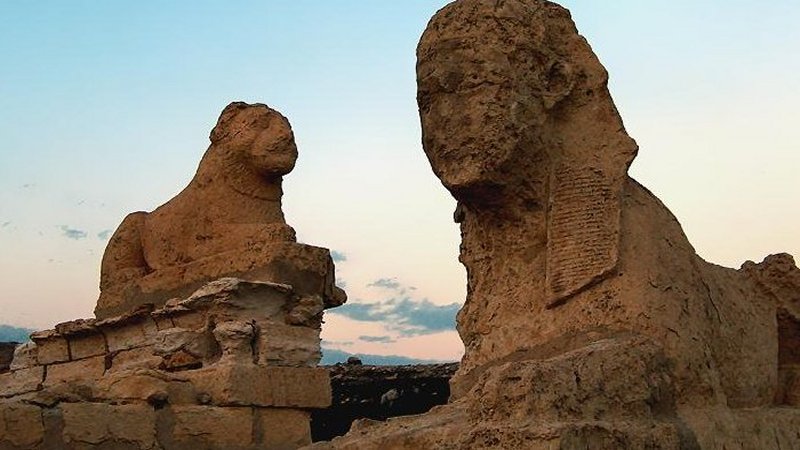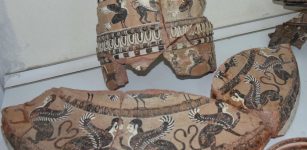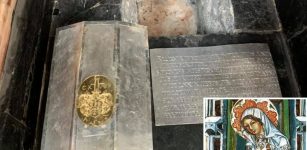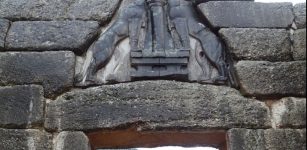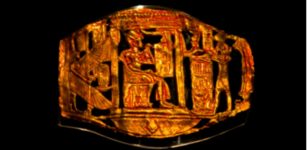On This Day In History: First Supernova Observation Ever Recorded – On July 4, 1054 AD
MessageToEagle.com – On July 4, 1054 AD, a supernova that created the Crab Nebula was observed and recorded by Earth-bound chroniclers.
Chinese astronomers noticed a bright “guest” star near Tianguan, (now known as a Zeta Tauri) in the constellation of the Bull. They were first to document the massive supernova of the Crab Nebula created thousands of years ago and consisting of a huge expanding cloud of gas and dust 6,000 light-years from Earth.
It was the first supernova observation ever recorded.
Anasazi pictograph possibly depicting the Crab Nebula supernova in AD 1054. Chaco Canyon, New Mexico. Image credit: Alex Marentes – source
The great supernova was six times brighter than Venus and was only outshone by the sun and moon.
It shone in the daylight sky for several weeks and was visible at night for almost two years before disappearing from view. From June or July 1056, the object was not seen again until 1731, when an observation of the now quite faint astronomical object was recorded by an English amateur astronomer John Bevis.
However, the object was rediscovered by French comet-hunter Charles Messier in 1758, and it soon became the first object in his catalog of objects now known as the Messier Catalog. Thus, the Crab Nebula is often referred to as M1.
An entry in the Records of the Royal Observatory of Peking reads:
“In the first year of the period Chihha, the fifth moon, the day Chi-chou, a great star appeared approximately several inches southeast of T’ien-Kuan (i.e. Zeta Tauri).
After more than a year it gradually became invisible.”
Sung dynasty chronicles of the appearance of the Crab Nebula Supernova of 1054 AD.
 Crab Nebula. The Crab Nebula is the shattered remnant of a massive star that ended its life in a supernova explosion. nearly a thousand years old. It is located around 6,500 light years from Earth in the constellation of Taurus.
Crab Nebula. The Crab Nebula is the shattered remnant of a massive star that ended its life in a supernova explosion. nearly a thousand years old. It is located around 6,500 light years from Earth in the constellation of Taurus.
From the Sung-shih [Annals, of the Sung Dynasty] (Astronomical Treatise, chapter 56).
“On the 1st year of the Chi-ho reign period, 5th month, chi-chou (day) [July 4, 1054], a guest star appeared approximately several inches to the south-east of Tian-kuan [Aldebaran]. After a year and more it gradually vanished.”
From the Sung-shih (Chapter 9).
“On the first year of the Chia-wu reign period, 3rd month, xin-wei (day). The Director of the Astronomical Bureau reported that since the 5th month of the 1st year of the Chih-ho reign period, a guest star had appeared in the morning at the east, guarding Tian-kuan, and now [two years after its first appearance] it has vanished”.
From the Sung-hui-yao [Essentials of the Sung dynasty history] (Chapter 52)
“On the 1st year of the Chih-ho reign period, 7th month, 22nd day [August 27, 1054] … Yang Wei-te said ‘I humbly observe that a guest star has appeared. Above the star in question there is a faint glow, yellow in colour. If one carefully examines the prognostications concerning the emperor, the interpretation is as follows:
The fact that the guest star does not trespass against Pi and its brightness is full means that there is a person of great worth. I beg that this be handed over to the Bureau of Historiography’. All the Officials presented there congratulations and the Emperor ordered that it be sent to the Bureau of Historiography.
During the 3rd month of the 1st year of the Chia-yu reign period the Director of the Astronomical Bureau said, ‘The guest star has vanished, which is an omen of the departure of the guest’. Earlier, during the 5th month in the 1st year of the Chih-ho reign period, the guest star appeared in the morning in the east guarding Tian-kuan. It was visible in the daytime, like Venus. It had pointed rays in the four directions and its colour was reddish-white. Altogether it was visible in daytime for 23 days.”
Other accounts of the same event appear in the annals of the Liao Dynasty of north China, and in Japanese chronicles.
The supernova, probably also observed by skywatchers of the Anasazi People in the American Southwest (image above), was viewed as the bright new star in 1054. Historic research shows that a crescent moon was visible in the sky very near the new star on the morning of July 5, the day following the observations by the Chinese.
The multi-spiked star to the left represents the supernova near the crescent moon. The handprint above may signify the importance of the event, or maybe the artist’s “signature.”
MessageToEagle.com



